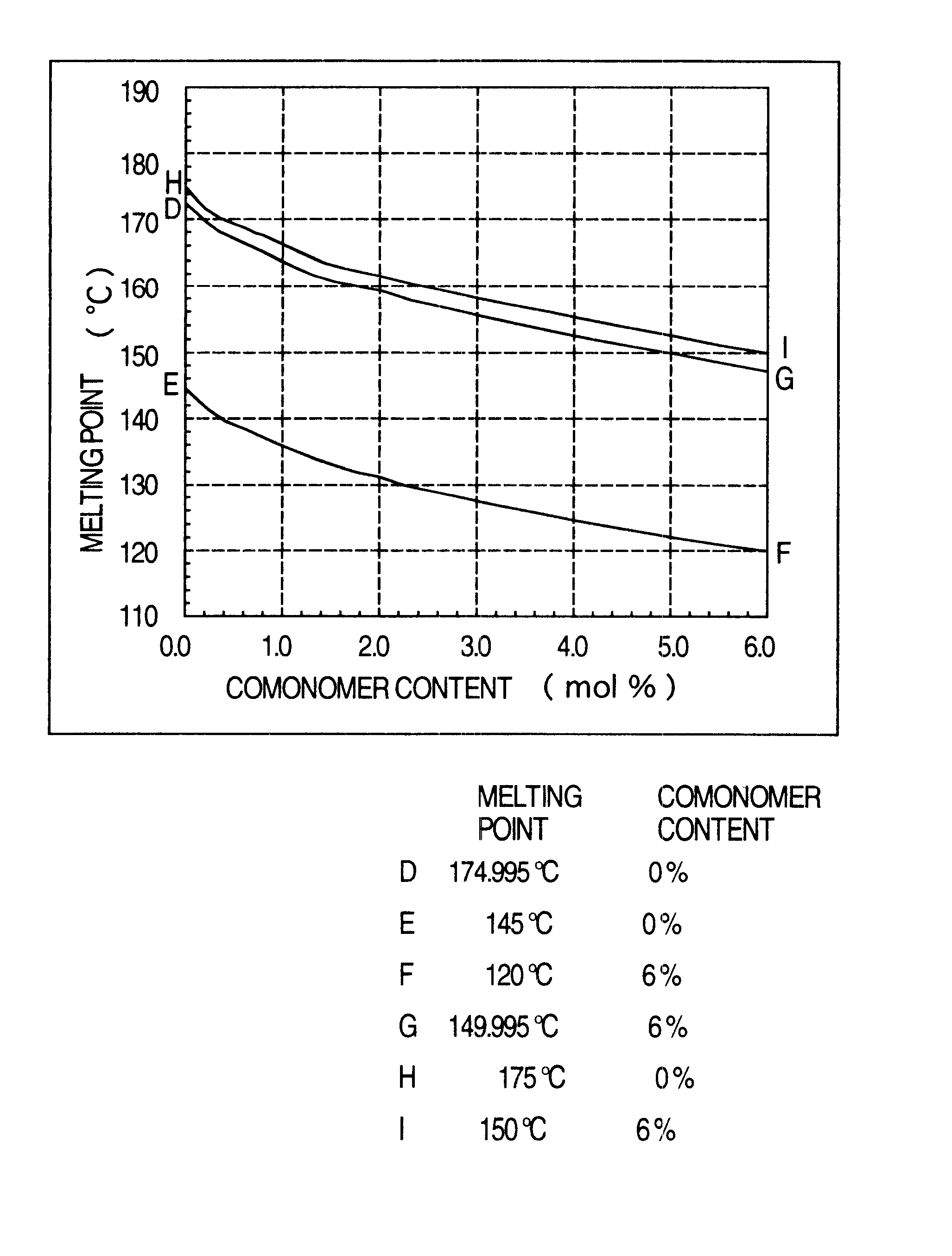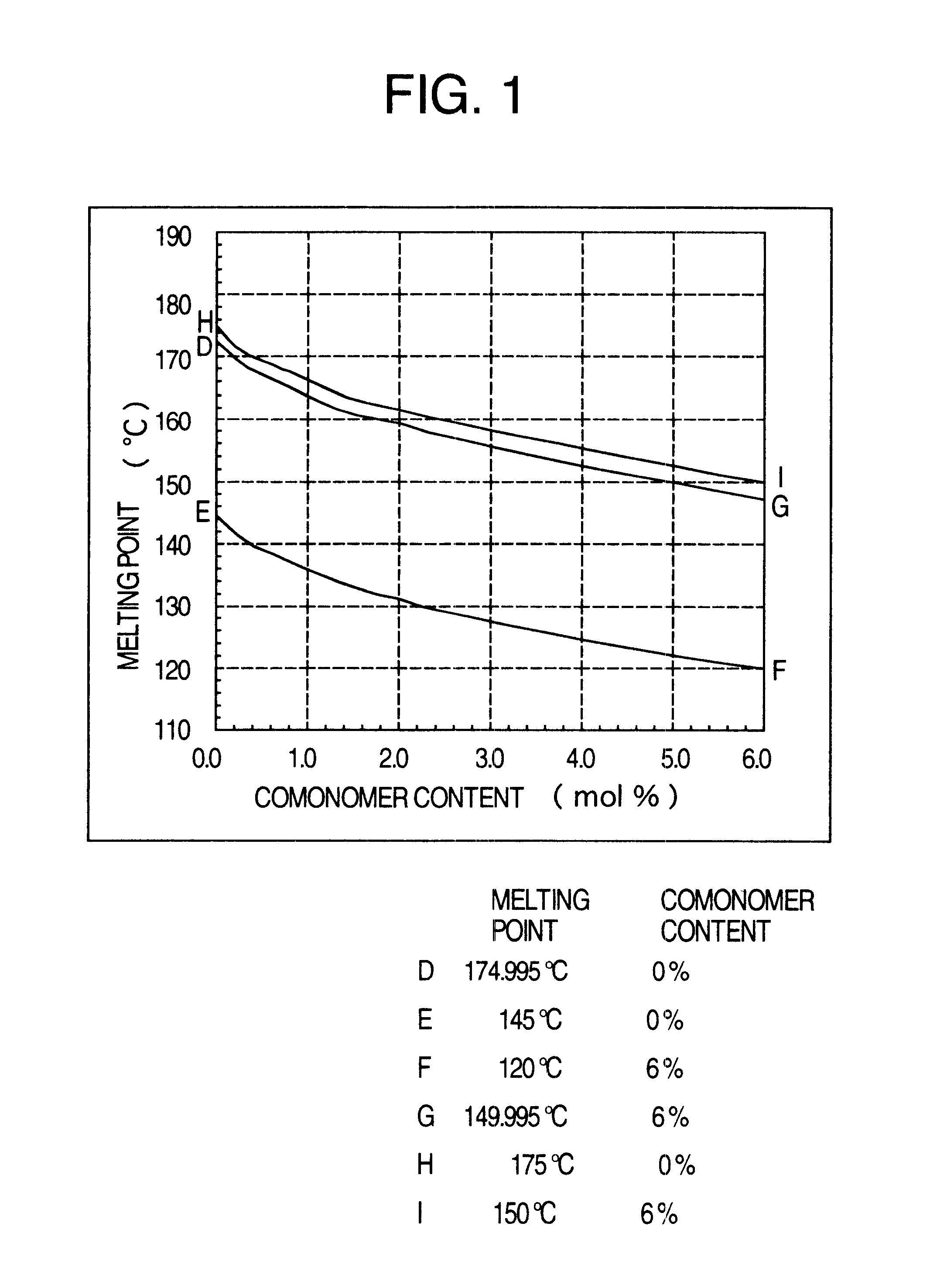Low-molecular weight oxymethylene polymer and composition thereof
a technology of oxymethylene polymer and low molecular weight, which is applied in the field of low molecular weight oxymethylene polymer and composition thereof, can solve the problems of reduced weldability and warping of molded articles, excessive fluidity reduction, and poor appearance of molded articles, so as to improve mechanical properties, improve flexural modulus, and improve the effect of mechanical properties
- Summary
- Abstract
- Description
- Claims
- Application Information
AI Technical Summary
Benefits of technology
Problems solved by technology
Method used
Image
Examples
production examples 2
In Production Examples 2 to 7, the procedure of Production Example 1 was carried out by changing the amount of the molecular weight modifier used for the polymerization as shown in Table 1. In Production Example 8, the procedure of Production Example 1 was followed except that the ratio of boron trifluoride in the polymerization catalyst was 2.0.times.10.sup.-4 moles to 1 mole of trioxane. In Production Examples 9 to 13, the procedure of Production Example 1 was conducted by changing the amounts of 1,3-dioxolane and molecular weight modifier as shown in Table 1. Results are shown collectively in Table 1.
production examples 14
The procedure of Production Example 1 was carried out by using 1,4-butanediol formal as co-monomer and changing the amount of the molecular weight modifier as shown in Table 1. Results are shown in Table 1.
production example 17
To a 5-litre-capacity kneader provided with two agitating blades and a jacket capable of passing the heating medium, 2 kg of trioxane, 69 kg of 1,3-dioxolane (0.042 mole to 1 mole of trioxane) as co-monomer and 52.2 g of methylal as molecular weight modifier were supplied and mixed. Further, 6.6 g of a cyclohexane solution of 1 wt % boron trifluoride di-n-butyl etherate was added as polymerization catalyst so that the ratio of boron trifluoride would become 1.5.times.10.sup.-5 moles to 1 mole of trioxane to carry out polymerization. After 30 minutes of polymerization reaction, 2 litres of a 0.1% aqueous solution of tributylamine was added to deactivate the catalyst to stop the reaction. The contents of the kneader were filtered out, washed and dried to give a crude yield of 87%. To 100 parts by weight of the thus obtained oxymethylene copolymer, 1 part by weight of an aqueous solution containing hydroxylated choline formate (trimethyl-2-hydroxyethylammonium formate) as quaternary am...
PUM
| Property | Measurement | Unit |
|---|---|---|
| Percent by mass | aaaaa | aaaaa |
| Percent by mass | aaaaa | aaaaa |
| Percent by mass | aaaaa | aaaaa |
Abstract
Description
Claims
Application Information
 Login to View More
Login to View More - R&D
- Intellectual Property
- Life Sciences
- Materials
- Tech Scout
- Unparalleled Data Quality
- Higher Quality Content
- 60% Fewer Hallucinations
Browse by: Latest US Patents, China's latest patents, Technical Efficacy Thesaurus, Application Domain, Technology Topic, Popular Technical Reports.
© 2025 PatSnap. All rights reserved.Legal|Privacy policy|Modern Slavery Act Transparency Statement|Sitemap|About US| Contact US: help@patsnap.com



